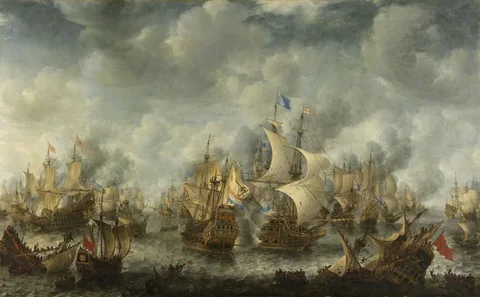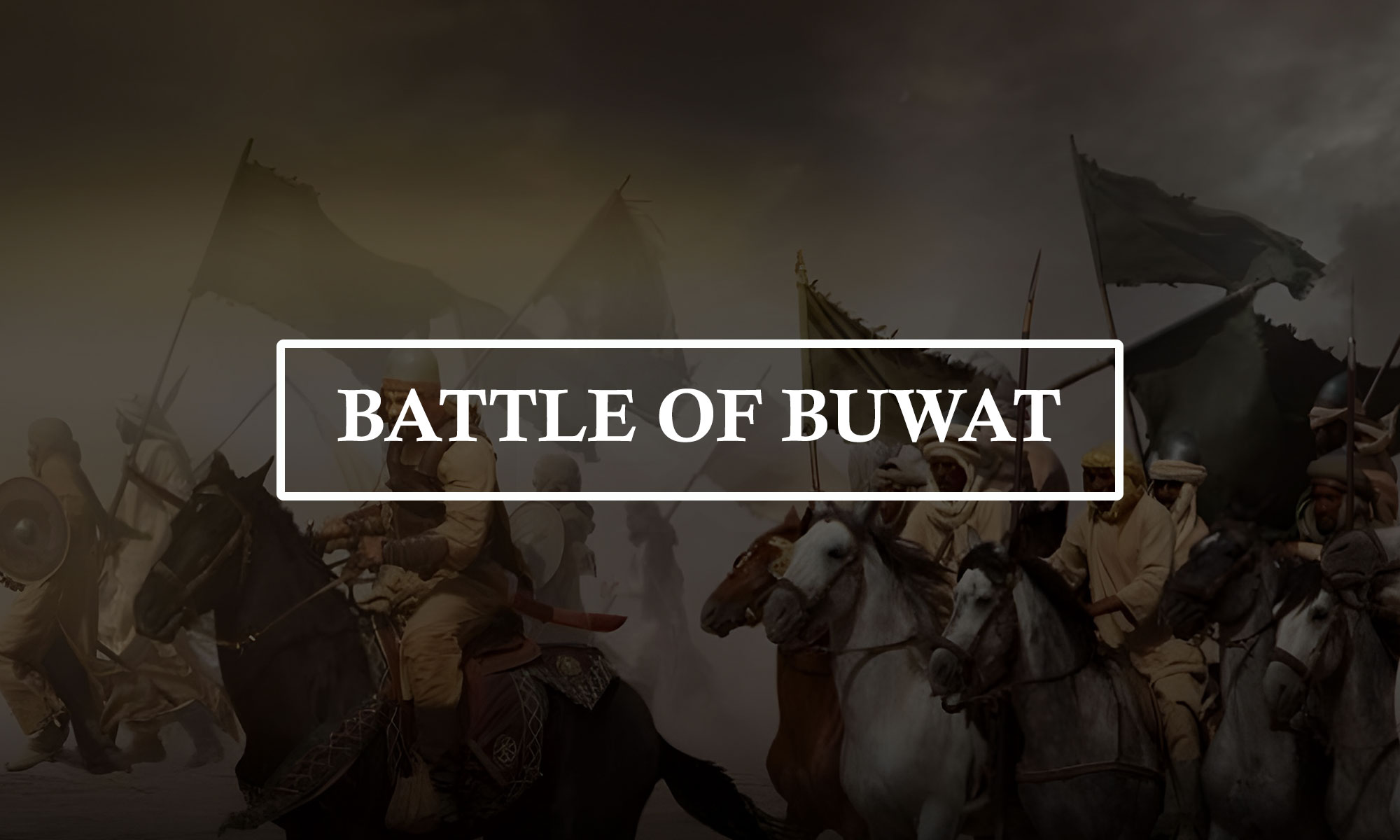The Battle of Buwat, also known as the Expedition or Raid of Buwat, was one of the early military campaigns led by Prophet Muhammad (peace be upon him) after his migration (Hijrah) from Mecca to Medina. Taking place in the month of Rabi’ al-Awwal in the second year of the Islamic calendar (2 AH/September-October 623 CE), this event is significant not for a direct military confrontation, but for its strategic and psychological impact on the evolving conflict between the Muslims of Medina and the Quraysh of Mecca.
The Battle of Buwat

After the Hijrah, the Muslims who emigrated from Mecca (the Muhajirun) left behind their properties and wealth, which were seized by the Quraysh. The Quraysh, who were the dominant tribe in Mecca and staunch opponents of the Islamic message, continued their economic and political hostilities against the Muslims. The Prophet Muhammad (peace be upon him) and his followers in Medina sought to reclaim some of their lost wealth and to pressure the Quraysh by targeting their trade caravans, which were the backbone of Meccan prosperity.
These early expeditions, including Buwat, were not just about economic recovery; they were also meant to:
-
Assert the presence and strength of the Muslims in the region.
-
Undermine the economic power of the Quraysh.
-
Prepare the Muslims for larger confrontations.
-
Demonstrate that the Muslims were now a political and military force to be reckoned with.
Objectives of the Expedition
The main objectives of the Battle of Buwat were:
-
To intercept and seize a large Quraysh trade caravan led by Umayyah ibn Khalaf (some sources mention Amr ibn Khalaf al-Jumahi), which was transporting goods and wealth between Mecca and Syria.
-
To recover a portion of the wealth that had been unjustly taken from the Muslims who had migrated to Medina.
-
To send a clear message to the Quraysh that the Muslims would no longer tolerate aggression and economic exploitation.
Read more: The battle of Waddan
The Route and Forces Involved
The Prophet Muhammad (peace be upon him) personally led a force of approximately 200 men, composed of both the Muhajirun (emigrants from Mecca) and the Ansar (helpers from Medina). This was notable as it was among the first expeditions where members of both groups participated together, reflecting the growing unity of the Muslim community.
The Quraysh caravan, under the leadership of Umayyah ibn Khalaf, was substantial, reportedly accompanied by 100 armed men and transporting as many as 2,500 camels loaded with goods, The caravan was following the traditional trade route that passed through the region of Buwat, near the Juhaynah Mountains and Radwa mountain, between Mecca and Medina.
Read about: The Story Of Prophet Yunus
The Events at Buwat
Upon receiving intelligence about the movement of the Quraysh caravan, the Prophet and his companions set out from Medina with the intention of intercepting it. Sa’d ibn Mu’adh was appointed to manage affairs in Medina during the Prophet’s absence.
When the Muslims reached the area of Buwat, they found that the caravan had already altered its course. The Quraysh, having learned of the Muslim expedition through their scouts, took an untrodden route to avoid confrontation, As a result, no direct fighting occurred, and the Muslims returned to Medina without any spoils or casualties.
Strategic and Psychological Impact
Although the expedition did not result in a battle or the capture of the caravan, its significance lies in several key areas:
-
Demonstration of Strength: The mobilization of 200 armed Muslims sent a clear signal to the Quraysh and other tribes that the Muslims were now capable of organized military action.
-
Psychological Warfare: The Quraysh’s decision to avoid confrontation and take a longer, more difficult route showed their growing apprehension about Muslim power. This forced them to expend more resources and time, disrupting their trade efficiency.
-
Preparation for Future Engagements: The expedition served as valuable training and experience for the Muslim community, laying the groundwork for future, more decisive battles such as Badr.
-
Political Consolidation: The participation of both the Muhajirun and the Ansar under the Prophet’s leadership strengthened the unity and resolve of the Muslim community in Medina.
Recommend: the story of Prophet Sulaiman
Lessons and Legacy
The Battle of Buwat exemplifies several important principles in early Islamic strategy:
-
Intelligence and Planning: The Prophet’s use of scouts and timely information gathering was crucial, even though the immediate objective was not achieved.
-
Economic Warfare: Targeting enemy supply lines and economic interests was a legitimate and effective form of resistance, especially when direct confrontation was not always possible or desirable.
-
Moral and Psychological Victory: Even without combat, the Muslims achieved a psychological victory by forcing the Quraysh to change their plans and by asserting their presence on the trade routes.
Read more: the story of prophet ishaq
FAQs
What was the main reason for the Battle of Buwat?
The primary reason was to intercept a Quraysh trade caravan and recover wealth that had been taken from the Muslims who migrated from Mecca. The expedition also aimed to pressure the Quraysh economically and demonstrate the growing strength of the Muslim community.
Who led the Muslim and Quraysh forces during the Battle of Buwat?
The Muslim force was led by Prophet Muhammad (peace be upon him), while the Quraysh caravan was led by Umayyah ibn Khalaf (some sources mention Amr ibn Khalaf al-Jumahi).
Did any fighting occur during the Battle of Buwat?
No, there was no direct combat. The Quraysh caravan, upon learning of the Muslim expedition, took an alternative route and avoided confrontation.
How many people participated in the expedition?
Approximately 200 Muslims took part in the expedition, while the Quraysh caravan was guarded by about 100 men and included around 2,500 camels.
What was the outcome of the Battle of Buwat?
The Muslims did not capture the caravan or gain any spoils, but the expedition demonstrated their growing military capacity and forced the Quraysh to alter their trade practices, marking a psychological and strategic success for the Muslims.
Conclusion
The Battle of Buwat, though bloodless, was a pivotal moment in the early Muslim–Meccan conflict. It marked a transition from passive endurance of persecution to active assertion of rights and interests by the Muslim community. The expedition demonstrated the Prophet Muhammad’s (peace be upon him) strategic acumen and the growing unity and resolve of his followers. While the immediate goal of intercepting the caravan was not achieved, the Muslims succeeded in sending a powerful message to their adversaries and preparing themselves for greater challenges ahead. The lessons of Buwat—planning, unity, and the importance of psychological and economic dimensions of conflict—would echo in subsequent campaigns, culminating in the landmark victory at the Battle of Badr.

